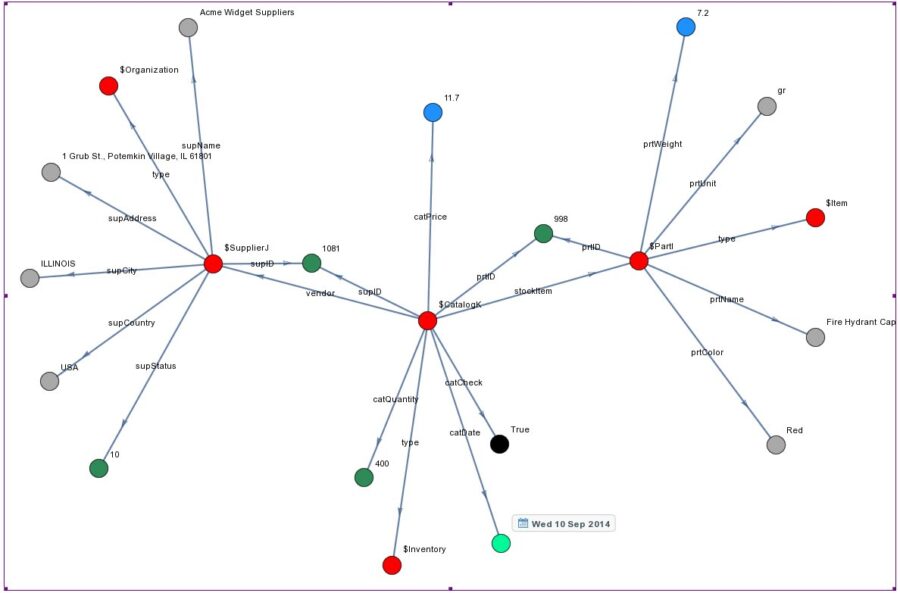Relation, Relationship and Association
While most players in the IT sector adopted Graph or Document databases and Hadoop based solutions, Hadoop is an enabler of HBase column store, it went almost unnoticed that several new DBMS, AtomicDB previous database engine of X10SYS, and Sentences, based on associative technology appeared on the scene. We have introduced and discussed about the data modelling architecture and the atomic information resource unit(AIR) of AtomicDB. Similar technology has been the engine power of Qlikview, a very popular software in Business Intelligence and Analytics, since 1993. Perhaps it is less known to the reader that the association construct is a first class citizen in Topic Map semantic web standard and it is translated to (RDF), the other semantic web standard. In other posts of this series we can see how it is possible to implement Associative Technology in multi-model graph databases such as OrientDB, in object-relational DBMS such as Intersystems Cache and Oracle or build the engine for in-memory processing with Wolfram Mathematica. In this article, we introduce the concept of association from the perspective of Entity-Relationship (ER) data model and illustrate it with the modelling of a toy dataset.

Summary
In this article we described several limitations of the ER model that we wish to overcome, in brief these are:
- Functional dependence of values
- Data redundancy
- Join operations
On the next article of our series we continue with an international industry standard for information management and interchange, the Topic Maps Data Model (TMDM). Associations in TMDM are similar to tuples but they have types. Each member of an association plays a role that is defined explicitly. In fact this is in full agreement with Chen’s Entity-Relationship diagrams (see Fig.1 and Fig.2 above). Chen discusses the role of an entity in a relationship and the role of an attribute in a relation and he considers distinct constrains on allowable values for a value set and constraints on permitted values for a certain attribute.
TMDM view is edifying because it divides information space in two layers. At the conceptual level we have topics that can be associated and represent any subject that can be conceived by a human being. At the occurrence level we have addressable information resources that describe those subjects.
Read full article here.
